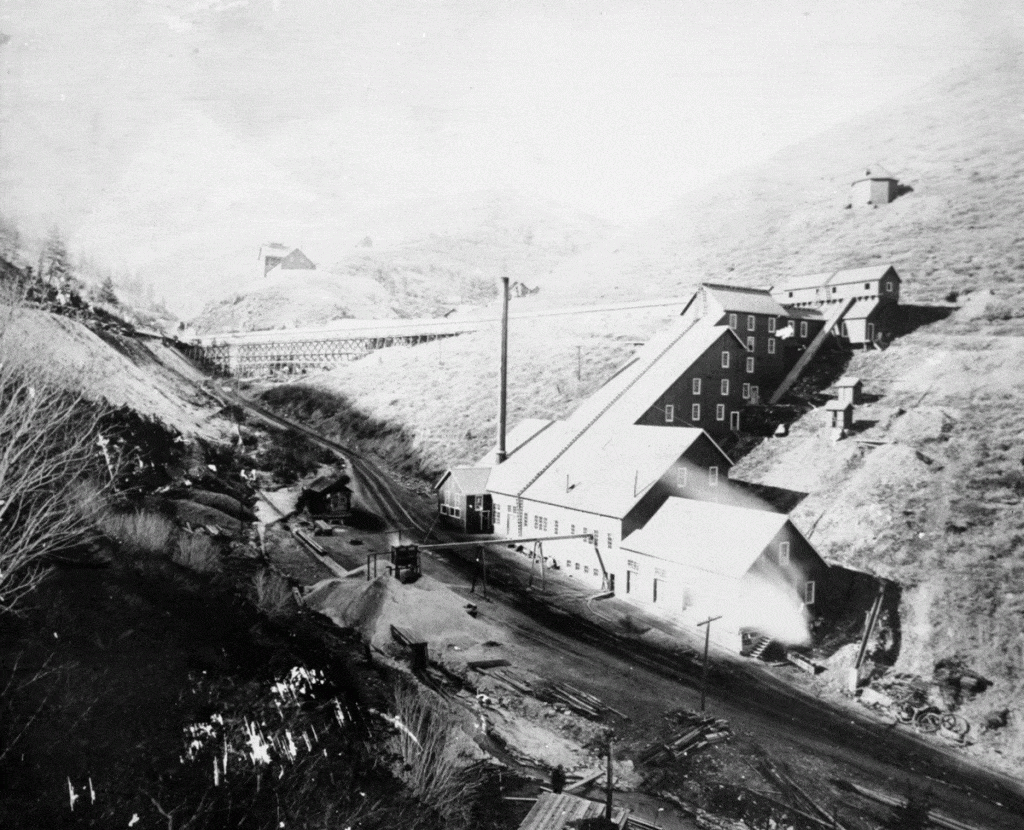
Credit: Park City Historical Society and Museum, Robert H. Nesley Collection
U. S. District Court Judge William H. Pope began taking evidence in the Snake Creek Mining and Tunnel Company’s suit against the Midway Irrigation Company in February 1915. He died on September 13, 1916 before thoroughly reviewing the case. The lawsuit was reargued in Utah Federal District Court before Judge Tillman D. Johnson in June 1918. Johnson handed down a decision favoring the mining company on December 19, 1918. The case was considered one of the most important ever heard in Utah.
Judge Johnson concluded that the irrigation company had not shown by a preponderance of the evidence that the waters in the tunnel, which drained Daly-Judge holdings, were derived from subterranean waters which would have flowed into Snake Creek had they not seeped into and been collected by the tunnel. In effect, the ruling said that the water belonged to the owner of the soil in which it was found—the Snake Creek Mining and Tunnel Company—regardless of where it came from.
The Midway Irrigation Company appealed the decision of the Utah District Court to the Eighth Circuit Court of Appeals in St. Louis. On January 28, 1921, that court reversed Johnson’s ruling and held that the tunnel’s water was a part of the natural flow of Snake Creek and subject of the irrigation company’s prior lawful appropriation. Snake Creek Mining was enjoined from asserting any claim to the surplus waters flowing from the portal of the mine into Snake Creek.
The Court of Appeals ruled that it was the mining company’s duty to show that the water in the tunnel was not seepage or percolating water from the surface which would have otherwise reached Snake Creek. The burden of proof was upon the mining company to show that the subterranean water intercepted by its tunnel was newly discovered and “developed” water. This rule seemed more rational and logical to the appellate judges.
The case took on national importance when the American Mining Congress made great effort to get the United States Supreme Court to review the Court of Appeals decision. The AMC believed that the ruling would “greatly injure the mining industry and would retard if not prevent mining development.”
The suit was argued in the U. S. Supreme Court on October 17, 1922. The Court had to decide whether the tunnel’s waters belonged to the mining company or the stockholders of the irrigation company. In a memorandum decision issued on January 15, 1923, Justice Van Devanter delivered the opinion of the Court succinctly affirming that the decree of the Circuit Court of Appeals was right, guaranteeing the irrigation company title to all water flowing from the Snake Creek tunnel forever.
Ironically, after all of the court battles, caving occurred far within the adit depriving both litigants of the water. The flow dropped from more than 8,000 gallons per minute to less than 700. Because work ended before the adit connected with any of the Daly Judge workings, it never became the great transportation highway envisioned in 1910.